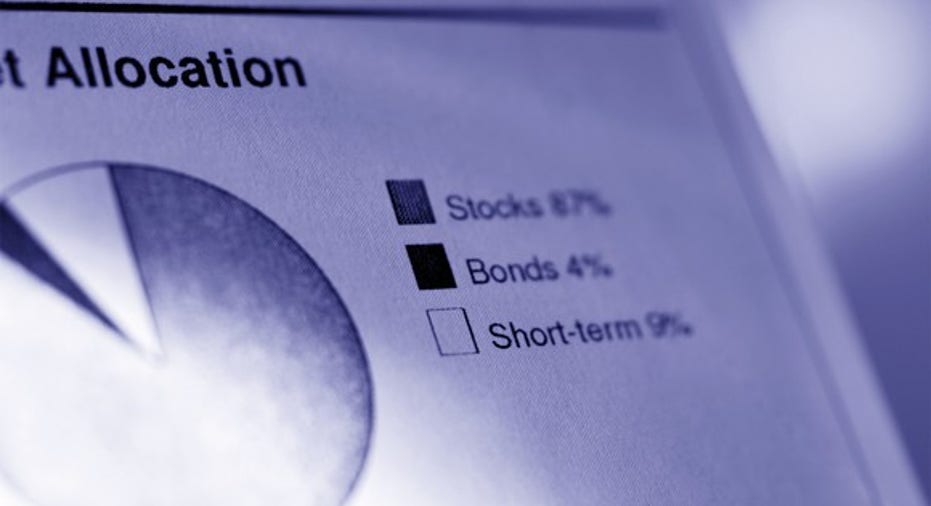Best Bond ETFs for 2016 and Beyond

Image source: Getty Images.
The best way to buy into bonds as an individual investor is to buy a diversified mix through a mutual fund or exchange-traded fund. There are many different types of bonds, and all ETF portfolios are different, but I think these three bond ETFs are some of the best choices for investors. The case for each ETF is laid out below.
|
Type |
ETF |
Ticker |
Expense ratio |
|---|---|---|---|
|
Total bond market |
Vanguard Total Bond Market ETF |
BND |
0.08% |
|
TIPS |
Vanguard Short-Term Inflation-Protected Securities |
VTIP |
0.10% |
|
Bullet |
Guggenheim BulletShares 2020 Corporate Bond ETF |
BSCK |
0.24% |
Source: Fund sponsors.
Vanguard Total Bond Market ETF
This Vanguard ETF gives investors almost exactly what it says in the name. The Vanguard Total Bond Market ETF tracks the U.S. Aggregate Float-Adjusted Bond Index, which mostly reflects the entirety of the bond universe, save for a few exceptions. Importantly, this bond fund doesn't hold TIPS, high-yield bonds, or municipal bonds, which investors may want to own through other vehicles.
With more than 8,000 holdings at the time of writing, the fund is broadly diversified, but most of its holdings are concentrated in U.S. Treasuries, which offer safety at the cost of higher yields. The result is a bond fund with a low average yield-to-maturity of just 2.2% at the time of writing.
One advantage of the Vanguard ETF is that it trades lower yields for less duration risk. Its holdings have an average duration of 5.7 years, which, in bond speak, generally means that a 1% increase in rates would lead to a 5.7% loss in the fund's value, while a 1% decrease in interest rates would lead to a 5.7% gain in the fund's value.
All in all, this is a very satisfactory way to own a diversified mix of bonds at a low price. The fund's annual expense ratio of just 0.08% makes it one of the least expensive bond funds on earth.
Vanguard Short-Term Inflation-Protected Securities
Worried about how inflation might affect your portfolio? This fund might be right for you. The Vanguard Short-Term Inflation-Protected Securities ETF invests only in U.S. Treasury Inflation-Protected Securities (TIPS), which offer a hedge against inflation.
TIPS pay a guaranteed rate of interest, and rise in value based on the rate of inflation in the United States. Thus, TIPS with a $1,000 face value would rise to a value of $1,030 if inflation were 3% in any given year, all the while paying the stated rate of interest at the new value of the bond.
The fund's underlying holdings currently have a yield to maturity of 1.15%, and an average duration of just 2.6 years. However, because the securities are inflation-protected, the average duration somewhat overstates the influence of rate increases or decreases on the fund's value. After all, one would expect that rates largely rise and fall with inflation, and thus this fund won't swing wildly in value with swings in interest rates.
Guggenheim BulletShares 2020 Corporate Bond ETF
The BulletShares line of ETFs may be one of the most innovative ways to invest in bonds. BulletShares ETFs invest in bonds that have the same maturity date, thus all bonds in its 2020 Corporate Bond ETF will mature in the year 2020.
Rising interest rates can have devastating impacts to long-term bond funds. A bond fund that has a mandate to hold bonds that mature in 25-30 years must constantly sell bonds as their maturity date nears to buy longer-dated bonds. If interest rates rise, the fund will necessarily sell its aging bonds at a lower price. In a rising rate environment, a bond fund might constantly sell bonds at $0.90 on the dollar to buy new, longer-dated bonds at $1.00.
Guggenheim's BulletShares ETFs fix this problem by buying bonds that mature in the same year and committing to hold these bonds to maturity. That is, after all, the only way to ensure that bond investors do not lose money to rising interest rates.
Though I've highlighted Guggenheim's 2020 ETF in this list, I'd recommend investors take a look at the range of maturity dates it has to offer. These funds are designed with finite lives, and will liquidate once they have reached their maturity date. With annual expense ratios of just 0.24%, these funds remain a very affordable way to hold corporate bonds and minimize interest rate risk.
The article Best Bond ETFs for 2016 and Beyond originally appeared on Fool.com.
Jordan Wathen has no position in any stocks mentioned. The Motley Fool has no position in any of the stocks mentioned. Try any of our Foolish newsletter services free for 30 days. We Fools may not all hold the same opinions, but we all believe that considering a diverse range of insights makes us better investors. The Motley Fool has a disclosure policy.
Copyright 1995 - 2016 The Motley Fool, LLC. All rights reserved. The Motley Fool has a disclosure policy.